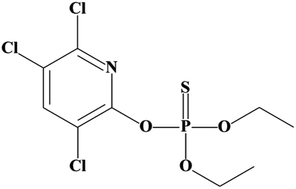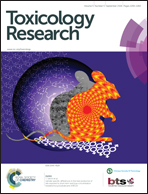An in vivo study in mice: mother's gestational exposure to organophosphorus pesticide retards the division and migration process of neural progenitors in the fetal developing brain
Abstract
Background: Widely utilized pesticides such as chlorpyrifos (CPF) can cause cognitive abnormalities, neurotransmitter disruptions and brain cytoarchitecture deficits in adulthood due to exposure in the prenatal period, but the mechanism underlying the development and maintenance of such neurotoxicity in embryonic neurogenesis remains largely unclear. Using embryonic neocortex slices, we investigated mitosis population constituents and characteristic interkinetic nuclear migration (INM) to evaluate the CPF effects on the proliferation process of neural progenitors. Methods: Gestational days (GD) 14 and GD 7.5–11.5 ICR dams were exposed to 5 mg kg−1 of CPF to investigate immediate toxicity and sustained toxicity. Proliferating nuclei were labeled with 50 mg kg−1 of Brdu at 1, 3, 6 and 9 hours before samples were collected. The mitoses count and Brdu positive nuclei (BPN) location were measured and analyzed in standard sections of the embryonic dorsolateral cortex. Results: CPF reduced the mitoses count in the primary progenitors but not in the secondary progenitors which are time sustained. CPF retarded BPN migration with a 6–9 μm delay of the relative location in the immediate groups and a 3–6 μm delay in the sustained ones. CPF had no or little effects on the global mitoses count and BPN count. Conclusion: Prenatal CPF exposure disrupts the proliferation process of primary progenitors in the embryonic dorsolateral cortex immediately and with sustained effects, which may contribute to explain the toxicity mechanism in early neurogenesis.


 Please wait while we load your content...
Please wait while we load your content...